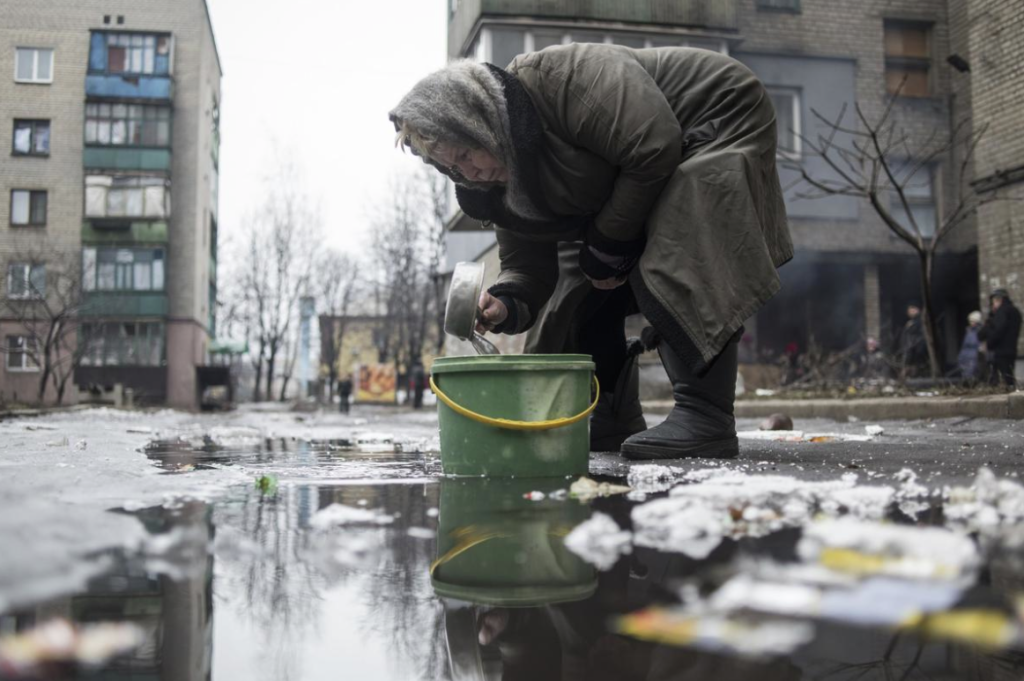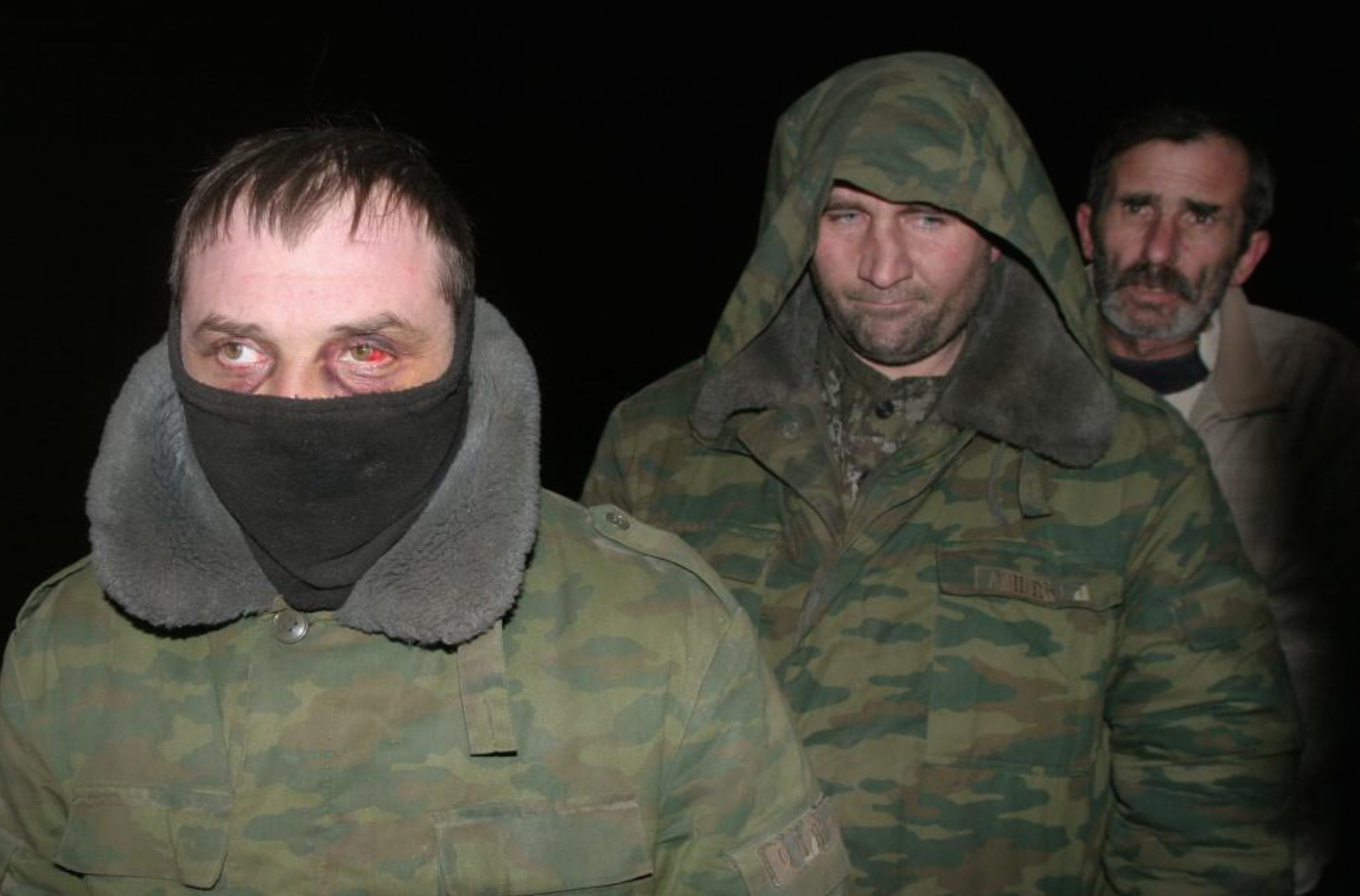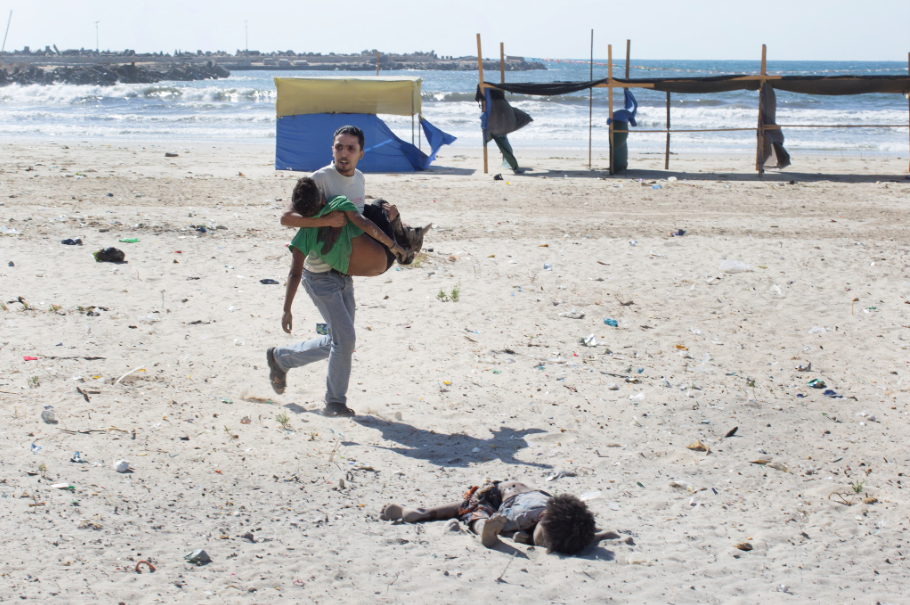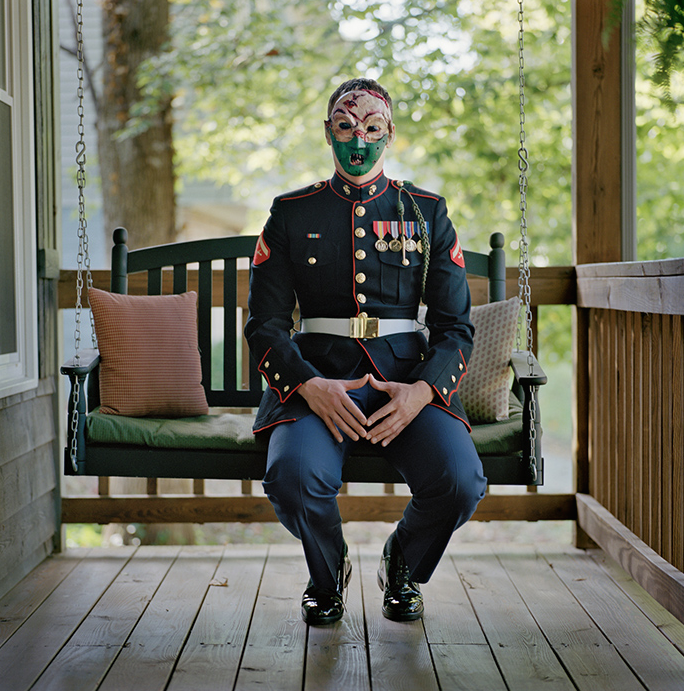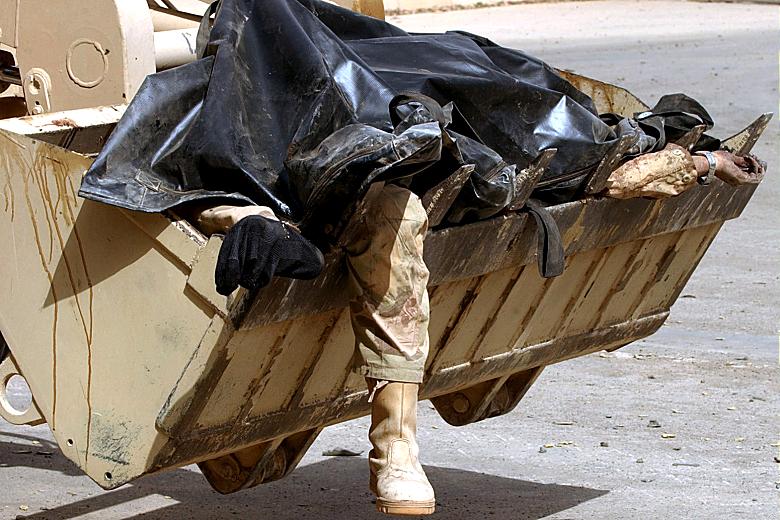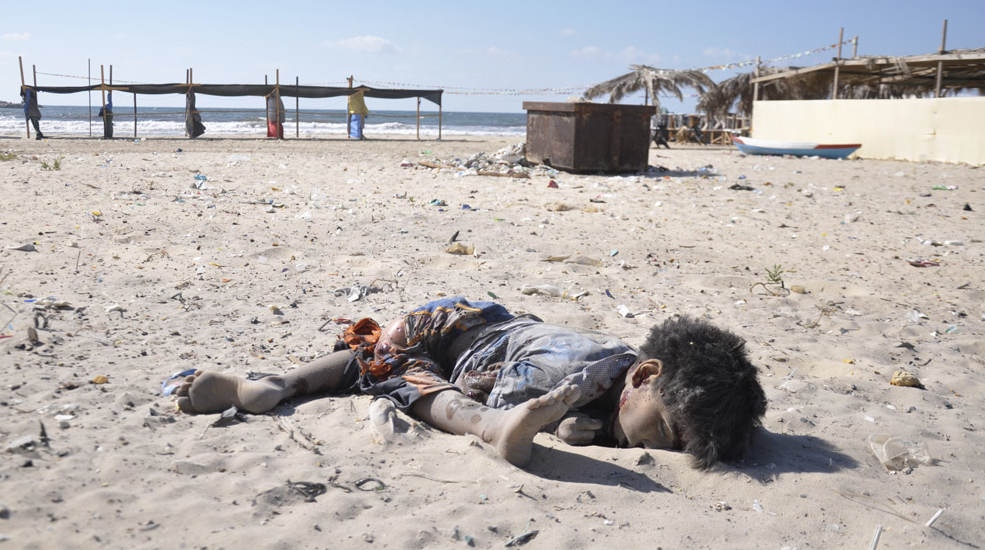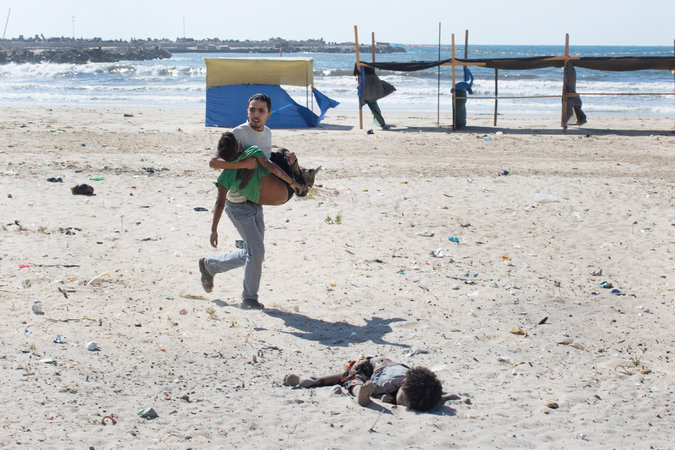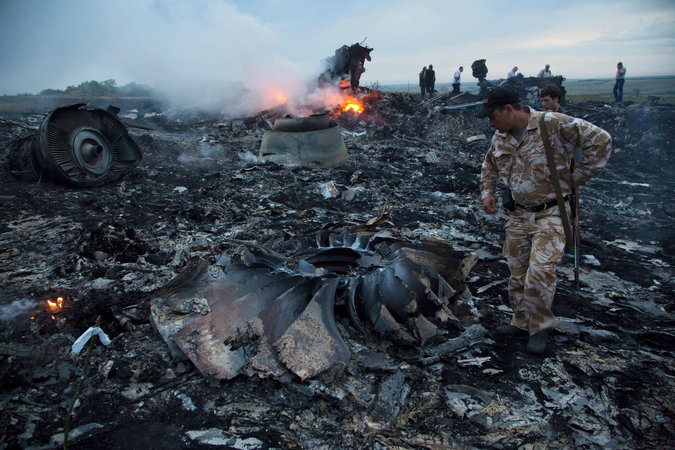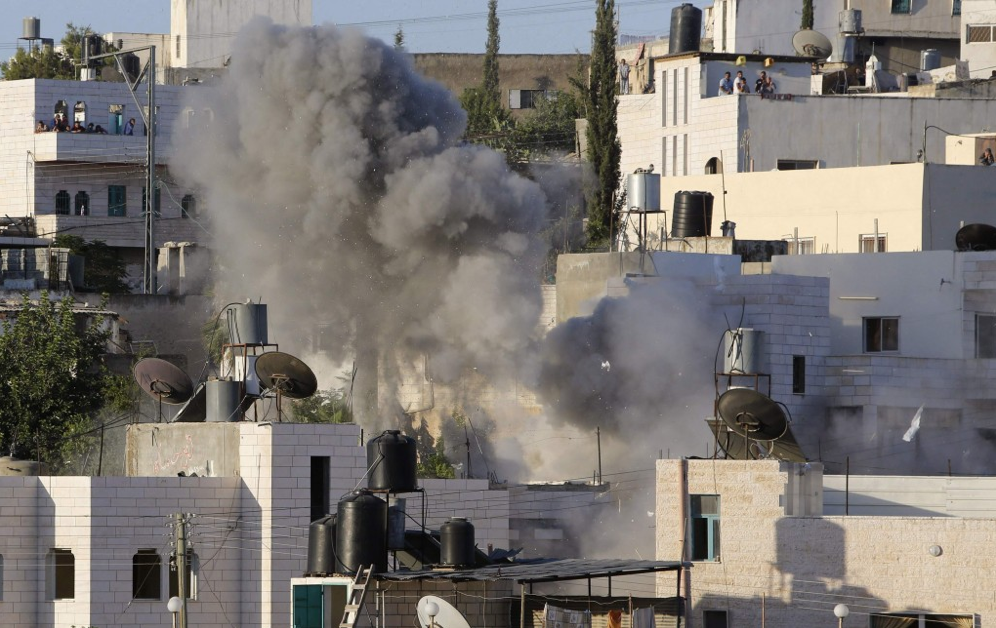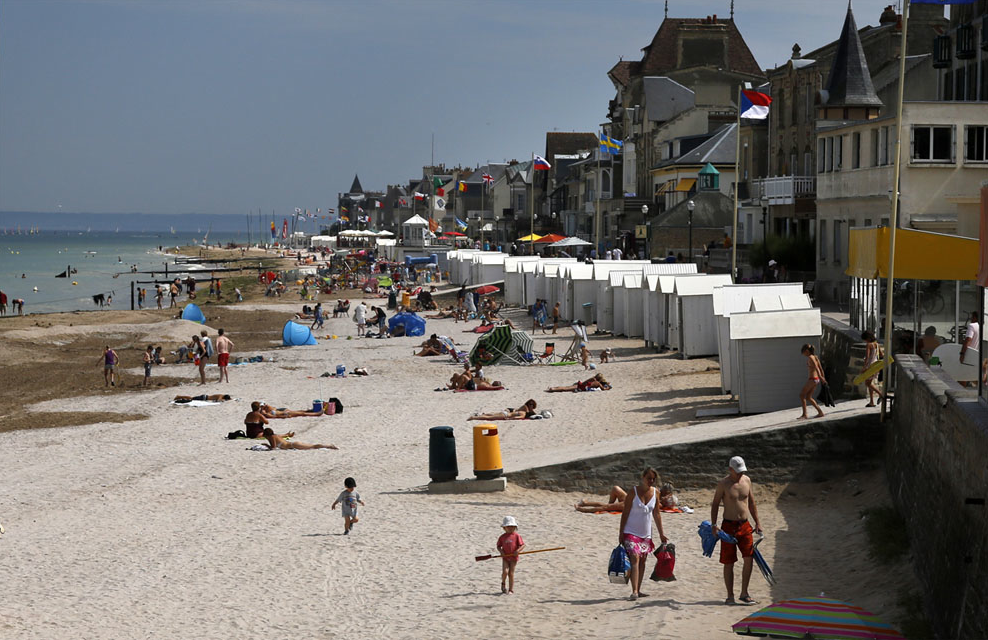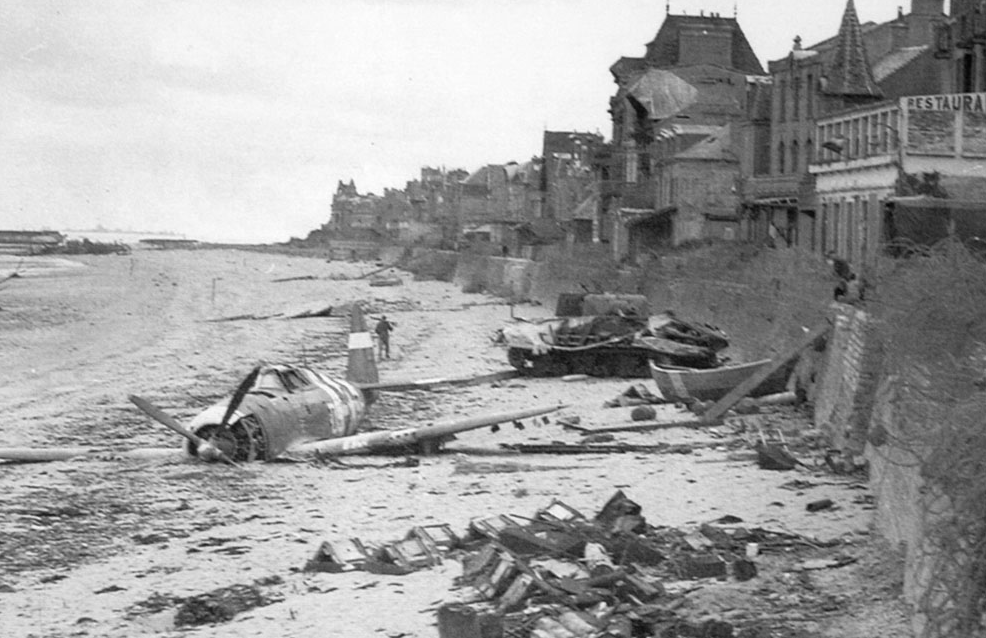The photographic record of the ruins of contemporary war are everywhere to be seen. Buildings once cast as monuments to modernization destroyed in the blink of an eye, homes completely devastated as if hit by a tornado, dead bodies strewn amongst the debris of what was once thought to be civilization, and much, much more. We have written about it previously under the sign of “rubble world” (here in 2008 and here in 2012).” And truth to tell, even now in 2015 it doesn’t seem like it is getting much better.
The photograph above is from Debaltseve in the Ukraine. According to the caption “an elderly woman collects water from a puddle” and then goes on to detail the “particularly intense” fighting that is going on in and around the city. Of course the fighting is not immediately present in the photograph, but what we see might be more demoralizing for that very fact as what we are witnessing is not the death of individuals (which is tragic enough and in its own right) or the demolition of buildings (which can and in all likelihood will be rebuilt by whatever regime takes over), but the utter destruction of civil society. The surrounding buildings mark a modern society, as does the road on which the woman stands; but for all of that she apparently has no water running in her home and so she is reduced to scooping what she can from the ice melting on the street. The garbage strewn around her makes it clear that this is not without its risks, but the will to survive is strong and one cannot live without water; so she does what she can. And when winter gives way to spring and summer and the ice is gone, who knows what she will do.
War’s horrors and tragedy comes in many shades, but as this photograph testifies its effects ripple throughout a society at the most fundamental levels, their most devastating effects implicated by the day-to-day demands on subsistence that stand as a constant challenge to the human spirit and make it hard to imagine the reconstruction of a vibrant and colorful society. The color cast of the scene in this photograph is grey and dreary, and it seems to offer little hope for the future—indeed, multiple shades of grey give little respite, but then this isn’t a movie in a fictional world. That said, what the photograph may well be showing us is the future—or at least one possible future—that could well test the limits of human resilience.
Photo Credit: Sergey Polezhaka/Reuters
